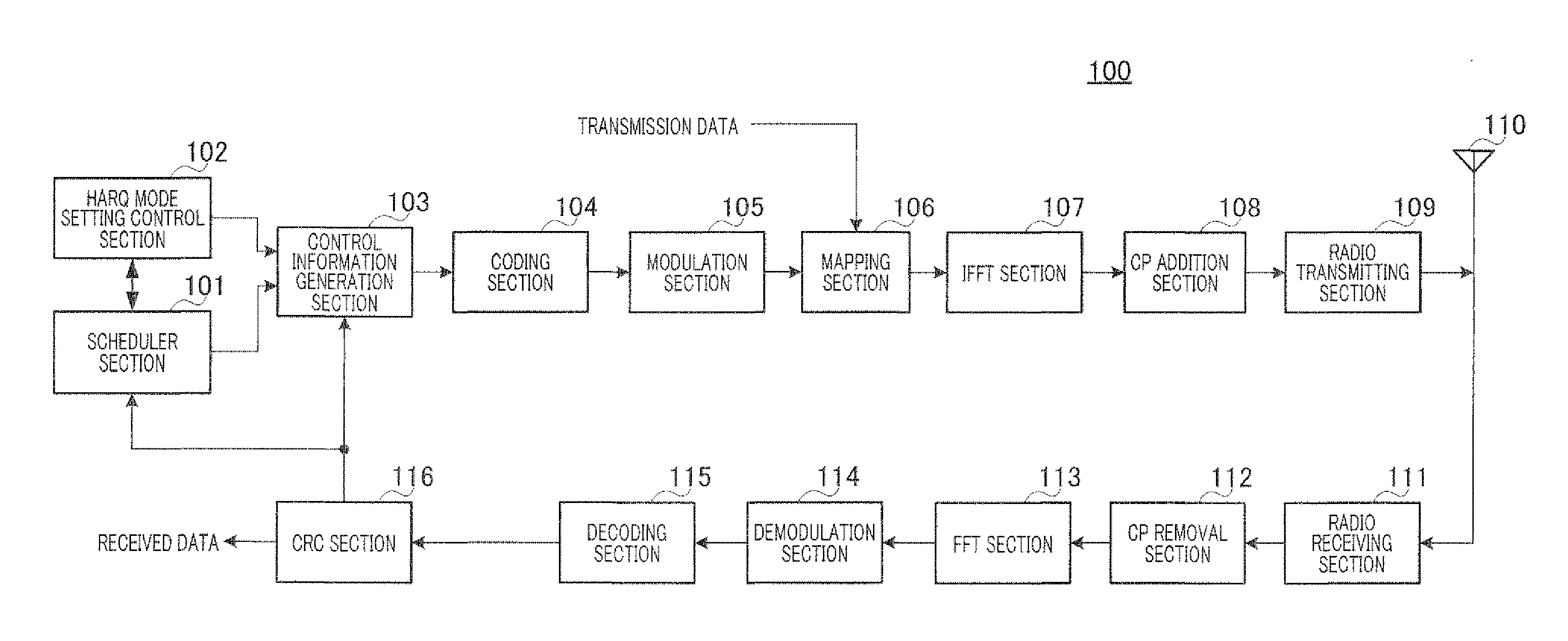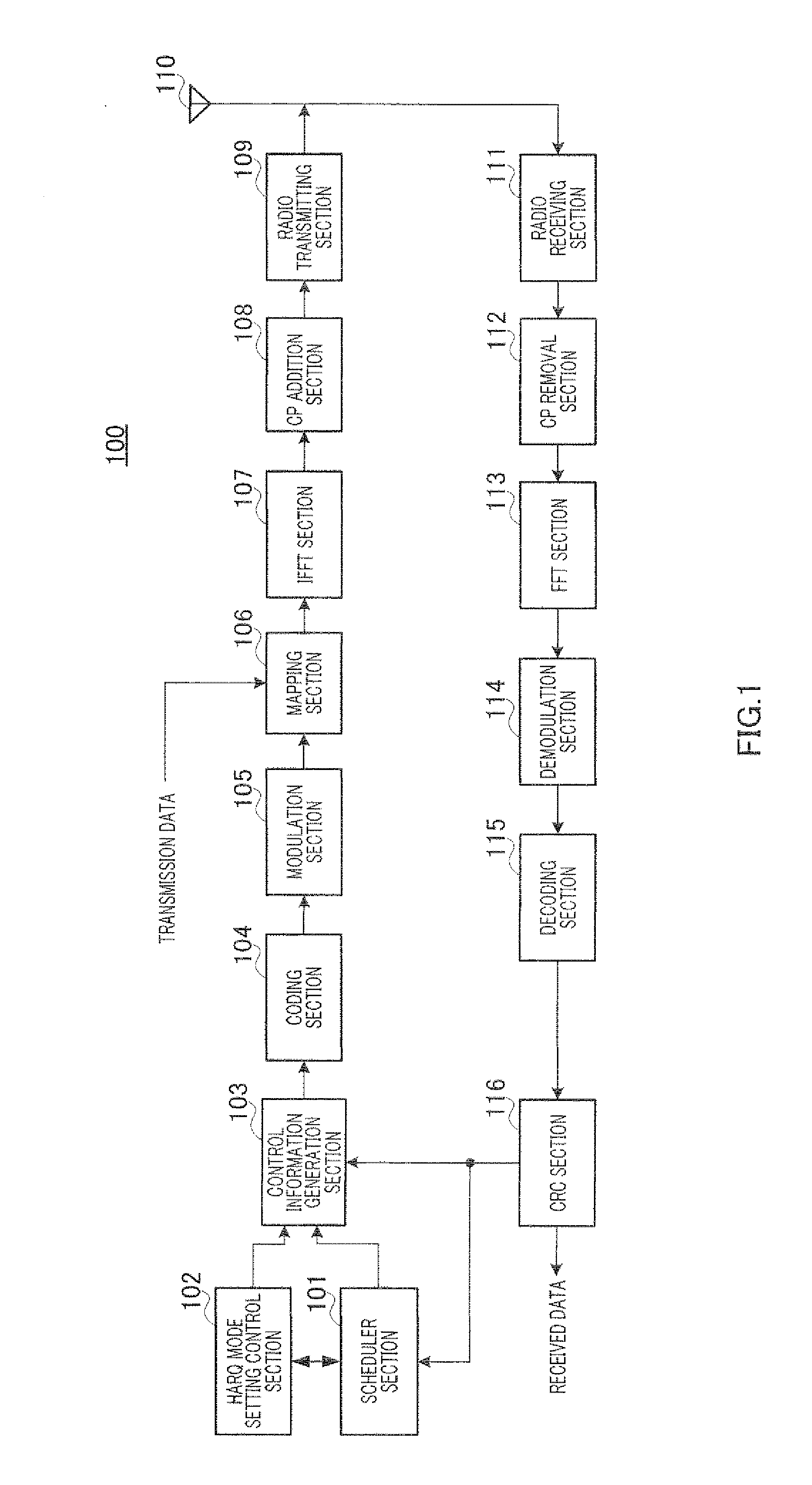Radio transmission device and retransmission control method
- Summary
- Abstract
- Description
- Claims
- Application Information
AI Technical Summary
Benefits of technology
Problems solved by technology
Method used
Image
Examples
case b
[0065](Case B) where another packet with priority (e.g. a packet subject to persistent scheduling) is allocated to predetermined allocation radio resources.
case c
[0066](Case C) where continuous and relatively wideband resources are secured, that is, where resource fragmentation is canceled.
[0067]FIG. 4 shows an example of relationships between radio resource positions (i.e. sub-frames) and rates of producing allocation information about cases (cases A, B and C) where a retransmission is performed using the allocation information.
[0068]Among these cases, in case A, allocation information is produced depending on the location and the mobility of a mobile station, so that, generally, allocation information is produced over radio resources uniformly. Accordingly, it is difficult to predict radio resource positions (i.e. sub-frames and RBs) in which adaptive HARQ using allocation information is performed, in advance.
[0069]Next, case B often occurs at sub-frames to which radio resources for the initial transmission in persistent scheduling are allocated.
[0070]Scheduler section 101 in the base station is able to control case B, and, by setting the ...
PUM
 Login to View More
Login to View More Abstract
Description
Claims
Application Information
 Login to View More
Login to View More - R&D
- Intellectual Property
- Life Sciences
- Materials
- Tech Scout
- Unparalleled Data Quality
- Higher Quality Content
- 60% Fewer Hallucinations
Browse by: Latest US Patents, China's latest patents, Technical Efficacy Thesaurus, Application Domain, Technology Topic, Popular Technical Reports.
© 2025 PatSnap. All rights reserved.Legal|Privacy policy|Modern Slavery Act Transparency Statement|Sitemap|About US| Contact US: help@patsnap.com



